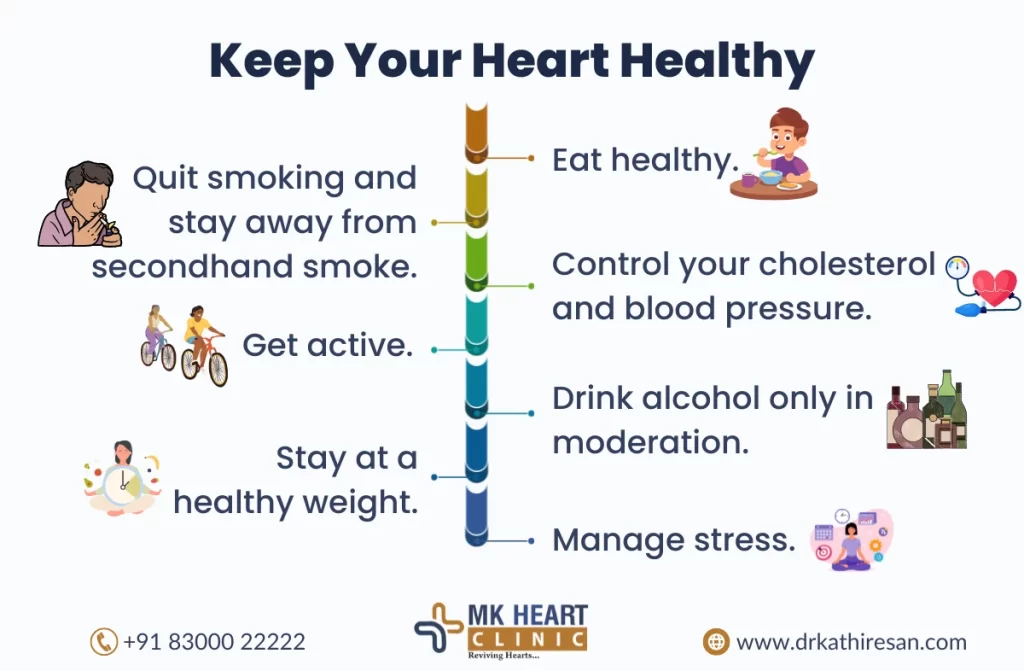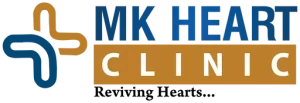Understanding first aid for heart attack is vital for saving lives and minimizing damage to the heart. Heart attacks can happen suddenly, and knowing what to do can make a significant difference. A heart attack occurs when blood flow to part of the heart is blocked, often by a blood clot. This blockage can cause damage to the heart muscle. Recognizing the symptoms early and providing the right first aid can greatly increase a person’s chances of survival.
In this article, we will discuss essential information about first aid for heart attack, including when to seek emergency help, symptoms to watch for, treatment options, prevention strategies, and proper first aid procedures. Additionally, we’ll cover how emergency response for heart attack and cardiac arrest first aid treatment can be crucial in these situations.
When to Seek Emergency Help
When dealing with a potential heart attack, knowing when to seek emergency help is crucial. Calling emergency services is the most important step you can take if you or someone else is experiencing symptoms. First aid for heart attack at home often starts with recognizing the need for immediate professional assistance.
- Immediate Action: If you notice chest pain or discomfort lasting more than a few minutes, call emergency services immediately. Even if symptoms subside, medical help is critical.
- Other Symptoms: Along with chest pain, be alert for shortness of breath, nausea, lightheadedness, or pain radiating to the arms, back, neck, or jaw—these can all indicate a heart attack.
- Timing Matters: Time is of the essence. The sooner a person receives treatment, the better the outcome. Heart muscle can begin to die within minutes of reduced blood flow, making quick action crucial.
- No Delays: If the person has a history of heart issues or risk factors like high blood pressure, do not wait for symptoms to worsen. Call for help immediately.
- Follow Instructions: When you call emergency services, provide clear information about the situation, including the person’s symptoms and any medical history.
- Stay Calm: Keep the person calm and reassure them that help is on the way. Panic can make symptoms worse.
How To Recognize Heart Attack?
- Chest pain: A tight, crushing pain in the chest, often radiating to the arm, neck, or jaw.
- Shortness of breath: Difficulty breathing, often accompanied by dizziness or lightheadedness.
- Cold sweats: Sudden, unexplained sweating even without physical activity.
- Nausea: Feeling nauseous or vomiting, especially in women.
- Fatigue: Feeling unusually tired or weak without exertion.
Quickly recognizing these symptoms is crucial for First aid for heart attack at home. The sooner you act, the better the chances of survival.

Signs and Symptoms of a Heart Attack
A heart attack is a medical emergency that requires immediate action. Recognizing the signs and symptoms of a heart attack early can significantly improve the chances of survival. Understanding what to look for and knowing how to act can make all the difference. Below are the common signs of a heart attack, along with essential first aid tips, including first aid for heart attack at home and CPR for heart attack.
1. Chest Pain or Discomfort
One of the most common symptoms of a heart attack is chest pain or a feeling of pressure. This discomfort often feels like tightness, squeezing, or a heavy weight on the chest. The pain may last for a few minutes, come and go, or feel persistent. It is important to note that heart attack chest pain often radiates to the arms, neck, jaw, or back.
Key Action:
If you experience or witness chest pain, especially with other signs, call for emergency help immediately. Quick action is crucial.
2. Shortness of Breath
Shortness of breath is another significant sign of a heart attack, even when the person is at rest. This symptom may accompany chest pain, but it can also occur without chest discomfort. Difficulty breathing should not be ignored.
Key Action:
If shortness of breath occurs with other symptoms, it’s critical to begin first aid for heart attack at home. This includes encouraging the victim to stay calm and help them remain seated while awaiting professional medical assistance.
3. Cold Sweats
A sudden cold sweat or excessive sweating without an obvious cause can indicate a heart attack. This is due to decreased blood flow to the heart as a result of a blockage in the arteries. Sweating profusely without physical exertion should not be overlooked.
Key Action:
If a person is sweating heavily and exhibiting heart attack symptoms, it’s essential to perform CPR for heart attack if they lose consciousness or stop breathing.
4. Nausea or Vomiting
Feeling nauseous or vomiting is a common symptom during a heart attack, especially when combined with other signs. Women are more likely to experience nausea or vomiting during a heart attack compared to men.
Key Action:
If nausea or vomiting is present along with chest pain, shortness of breath, or dizziness, call emergency services and provide cardiac arrest first aid treatment if the person collapses.
5. Dizziness or Lightheadedness
When the heart isn’t pumping efficiently due to a blockage in the arteries, dizziness or a fainting feeling may occur. This can be caused by decreased blood flow or low blood pressure resulting from a heart attack.
Key Action:
If dizziness or lightheadedness is present, ensure the person is seated or lying down and seek medical help immediately. If the person becomes unresponsive, begin CPR for heart attack right away.
6. Pain Radiating to Other Parts of the Body
Pain may not be confined to the chest. It can radiate to other parts of the body, including the left arm, neck, jaw, back, or even the stomach. This radiating pain is a key sign of a heart attack, especially if combined with other symptoms.
Key Action:
If pain spreads to the arms, neck, or jaw, combined with shortness of breath or sweating, act fast. Initiate first aid for heart attack at home and prepare to perform CPR for heart attack if the person loses consciousness.
What are the Causes of Heart Attack?
- Coronary artery blockage: The most common cause is the blockage of the arteries that supply oxygen-rich blood to the heart.
- Plaque buildup: A build-up of fatty deposits (plaque) narrows the arteries, leading to restricted blood flow.
- Blood clot formation: If plaque ruptures, a blood clot can form, blocking blood flow to the heart.
- Spasm in coronary arteries: Rarely, a spasm in the arteries can lead to heart attack, often triggered by drugs or stress.
- Other risk factors: High blood pressure, diabetes, high cholesterol, smoking, and family history increase the risk of heart attacks.
Understanding these causes of heart attack can help in recognizing risk factors and seeking early intervention to prevent cardiac events.
First Aid Treatment for Heart Attack
Administering prompt first aid for a heart attack at home can significantly improve survival chances. Follow these steps:
- Recognize the Symptoms: Be alert for signs like chest pain, shortness of breath, sweating, and discomfort radiating to the arms, neck, or back. Quick action at the onset of these symptoms can save a life.
- Call Emergency Services Immediately: Dial your local emergency number without delay. Fast access to medical professionals significantly increases survival and recovery chances.
- Stay with the Person: Provide reassurance and remain with them to keep them calm. Reducing anxiety can lessen strain on the heart.
- Help Them Sit Comfortably: Guide them to sit on the floor, ideally leaning against a wall or chair. This position reduces strain on the heart and minimizes the risk of injury if they collapse.
- Loosen Tight Clothing: Loosen any restrictive clothing, such as ties or belts, to ease breathing and improve circulation.
- Administer Aspirin: If they are not allergic and have no contraindications (such as bleeding disorders), give a 300 mg aspirin tablet to chew slowly. This can thin the blood and help reduce heart damage.
- Offer Nitroglycerin if Prescribed: If the person has a prescription for nitroglycerin, help them take it as directed. Do not give medication prescribed for someone else.
- Keep the Person Calm and Reassured: Stay close, speak gently, offer reassurance, and remind them to take slow, deep breaths to help lower heart strain.
- Monitor Their Condition: Continuously observe their breathing and responsiveness. If they become unresponsive and stop breathing, prepare to perform CPR immediately.
- Be Ready to Perform CPR: If the person loses consciousness and is not breathing, begin CPR. Push hard and fast in the center of the chest (about 100-120 compressions per minute) until professional help arrives.
- Use an AED if Available: If an Automated External Defibrillator (AED) is accessible, follow the device’s instructions. AEDs are designed for public use and will guide you through the steps if a shock is advised.
- Continue Until Help Arrives: Keep performing CPR or monitoring their condition until emergency services take over or the person regains responsiveness.
Being prepared to provide first aid for a heart attack at home is crucial. Familiarize yourself with these steps to act swiftly and effectively in an emergency.
What to Do & What to Avoid
- What to Do:
- Call 911 immediately.
- Keep the person calm.
- Have them chew an aspirin.
- Loosen tight clothing.
- Position them comfortably.
- What to Avoid:
- Don’t wait to call for help.
- Don’t give them food or drink.
- Don’t ignore symptoms.
- Don’t let them exert themselves.
CPR for Heart Attack
If the person becomes unresponsive and stops breathing, CPR for heart attack is critical until emergency help arrives.
- Check Responsiveness: Shake the person and ask if they’re okay. If there’s no response, call 911 and begin CPR.
- Perform Chest Compressions: Push hard and fast in the center of the chest at a rate of 100-120 compressions per minute.
- Give Rescue Breaths (if trained): After 30 compressions, give two rescue breaths. Pinch the nose shut and blow into the mouth until the chest rises.
- Use an AED: If an Automated External Defibrillator (AED) is available, use it as soon as possible by following the voice prompts.
Continue CPR and using the AED until help arrives or the person begins breathing on their own.
Prevention
Preventing heart attacks is a vital part of first aid for heart attack at home. Here are steps to reduce your risk:
- Healthy Diet: Focus on fruits, vegetables, lean proteins, and healthy fats. Limit unhealthy fats, cholesterol, and sodium.
- Regular Exercise: Aim for at least 150 minutes of moderate activity weekly, like walking or swimming.
- Maintain a Healthy Weight: Keeping a healthy weight lowers your risk of heart disease.
- Avoid Tobacco: Smoking significantly increases the risk of heart attacks. Quitting smoking can reduce this risk.
- Control Blood Pressure and Cholesterol: Regular check-ups are essential to monitor these levels and prevent heart problems.
- Stress Management: Techniques like mindfulness and yoga can help lower stress and improve heart health.
Should I Give Them Aspirin?
- Aspirin can help: If the person is conscious, give them an aspirin to chew. It can help reduce blood clotting and prevent further damage to the heart.
- Administer quickly: Aspirin should be taken immediately after the heart attack symptoms appear, but only if the person isn’t allergic to it.
- Check for contraindications: Don’t give aspirin if the person has bleeding disorders or is on blood-thinning medication.
- Dosage: A 325 mg aspirin is typically recommended, but consult a healthcare professional for personalized advice.
- Seek emergency help: Always call for medical assistance even if aspirin is administered.
Remember, aspirin is not a substitute for emergency medical care. First aid for heart attack at home should always be followed by prompt medical attention.
First Aid Steps for Someone Having a Heart Attack
When someone is having a heart attack, it’s essential to remain calm and act immediately. The following steps outline the first aid treatment for heart attack:
- Call Emergency Services – Dial 911 or local emergency numbers immediately. This is the most critical first step in first aid treatment for heart attack.
- Keep the Person Calm and Still – Make sure the person sits down and remains as calm as possible. Panic can worsen symptoms.
- Give Aspirin (if appropriate) – Chewing aspirin (about 325 mg) can help thin the blood and reduce damage to the heart muscle.
- Administer CPR if Necessary – If the person loses consciousness and has no pulse, perform CPR immediately. This will help keep oxygen circulating to the brain and organs.
- Apply Nitroglycerin (if prescribed) – If the person has been prescribed nitroglycerin, give it as directed to help relax blood vessels.
- Loosen Tight Clothing – This helps improve circulation and ensures the person remains comfortable during the emergency.
- Monitor Vital Signs – Keep track of the person’s breathing and pulse until help arrives.
Understanding the first aid treatment for heart attack at home is crucial, as these initial steps could save a life.
Conclusion
Understanding first aid for heart attack, including recognizing symptoms, knowing when to seek help, and providing proper care, can save lives. Be prepared to take action, and don’t hesitate to call 911. Quick response and CPR for heart attack can make all the difference in survival and recovery. Additionally, knowing cardiac arrest first aid treatment is crucial for handling severe emergencies effectively. Stay heart-healthy by adopting preventive strategies and staying informed about emergency response for heart attack situations. Your preparedness can help you act swiftly and confidently in life-threatening moments.
Read Also: Heart Attack Treatment

